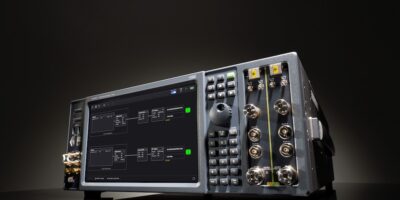The M9484C VXG four-channel vector signal generator offers up to 54GHz frequency and up to 5GHz RF bandwidth and low phase noise in a single instrument.
It also has real-time capabilities to support wireless applications and a V3080A vector signal generator frequency extender which expands the frequency range up to 110GHz.
Testing 5G mobile communications, 6G research, satellite communications and radar applications requires signal generation equipment capable of creating millimeter-wave (mmWave) signals at high bandwidths. These applications also adopt multi-antenna techniques, such as spatial diversity, spatial multiplexing and beamforming for multi-antenna test applications such as MIMO and beamforming with precise phase coherence and timing synchronisation.
The M9484C VXG signal generator enables customers to reduce test system setup complexity and achieve accurate and repeatable multi-channel measurements in a single instrument, said Keysight.
The instrument covers frequency ranges from 9kHz to 54GHz and up to 110 GHz with the frequency extender.
A fully integrated, calibrated and synchronised signal generator delivers low phase noise and minimises measurement uncertainty, said Keysight and the signal generator overcomes the excessive path loss experienced at mmW frequencies with low error vector magnitude (EVM) and distortion at high output power.
Direct digital synthesis (DDS) technology delivers RF performance which can characterise devices under test (DUTs).
Real-time signal processing and comprehensive signal creation enables complex test scenarios and simplifies test complexity for receiver and performance tests.
The M9484C VXG also supports MIMO real-time fading for all 3GPP 5G new radio (NR) required base station conformance tests with PathWave Signal Generation software.
In addition to streamlining complex receiver test scenarios with eight virtual signal emulation per RF channel, for up to 32 signals, the pre-defined compliance test set ups, auto-configuring signal analysis are designed to simplify the test workflow.
Keysight Technologies delivers design and validation products, software-driven insights and analytics that bring tomorrow’s technology products to market faster across the development lifecycle, in design simulation, prototype validation, automated software testing, manufacturing analysis, and network performance optimisation and visibility in enterprise, service provider and cloud environments.
Keysight customers operate in the worldwide communications and industrial ecosystems, aerospace and defence, automotive, energy, semiconductor and general electronics markets.







